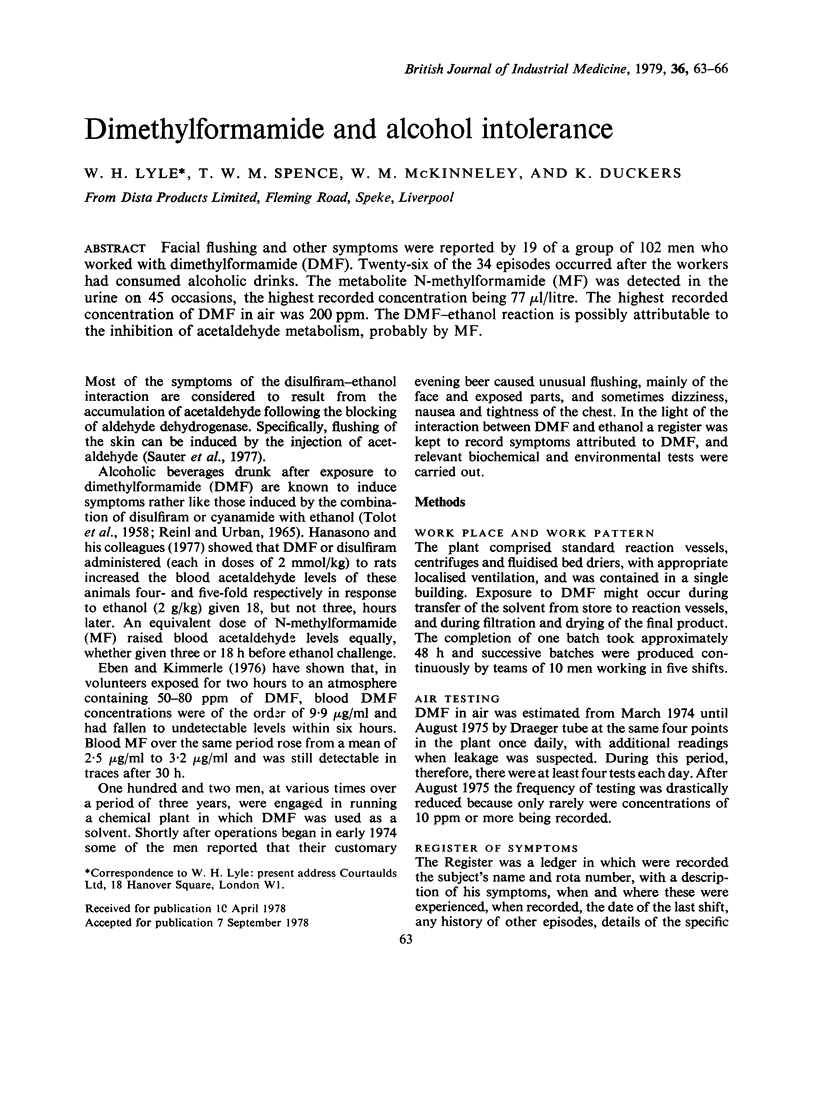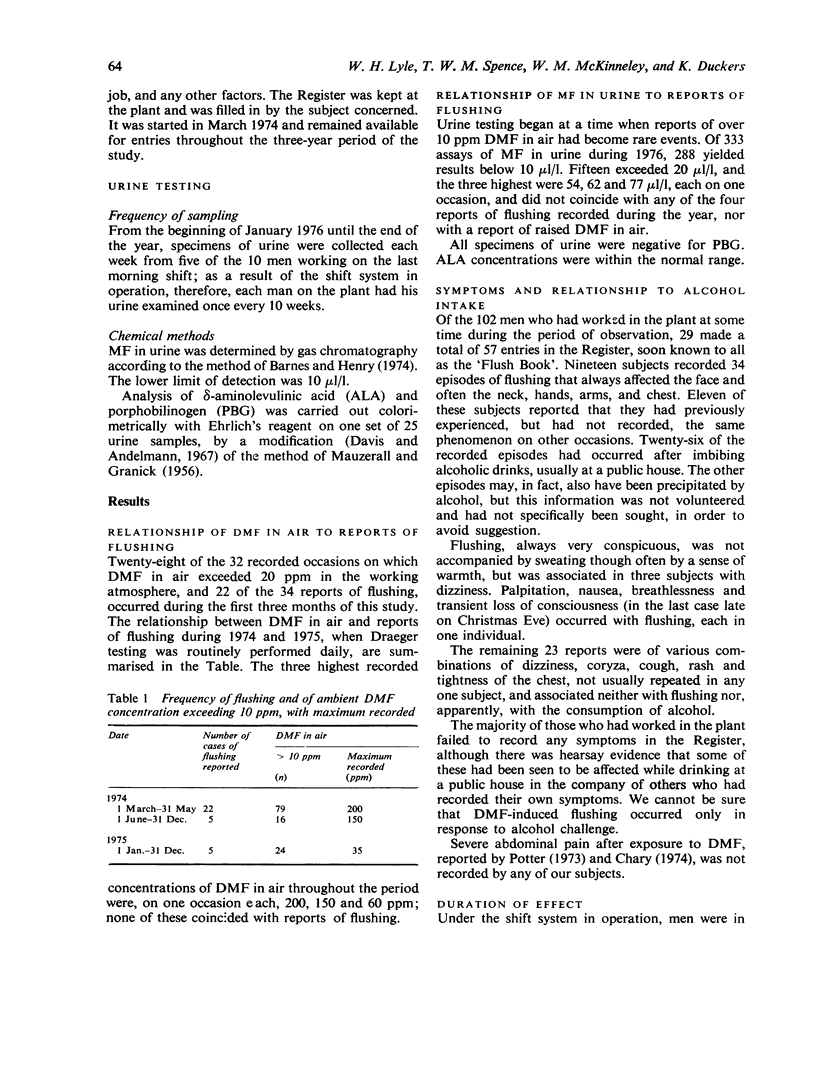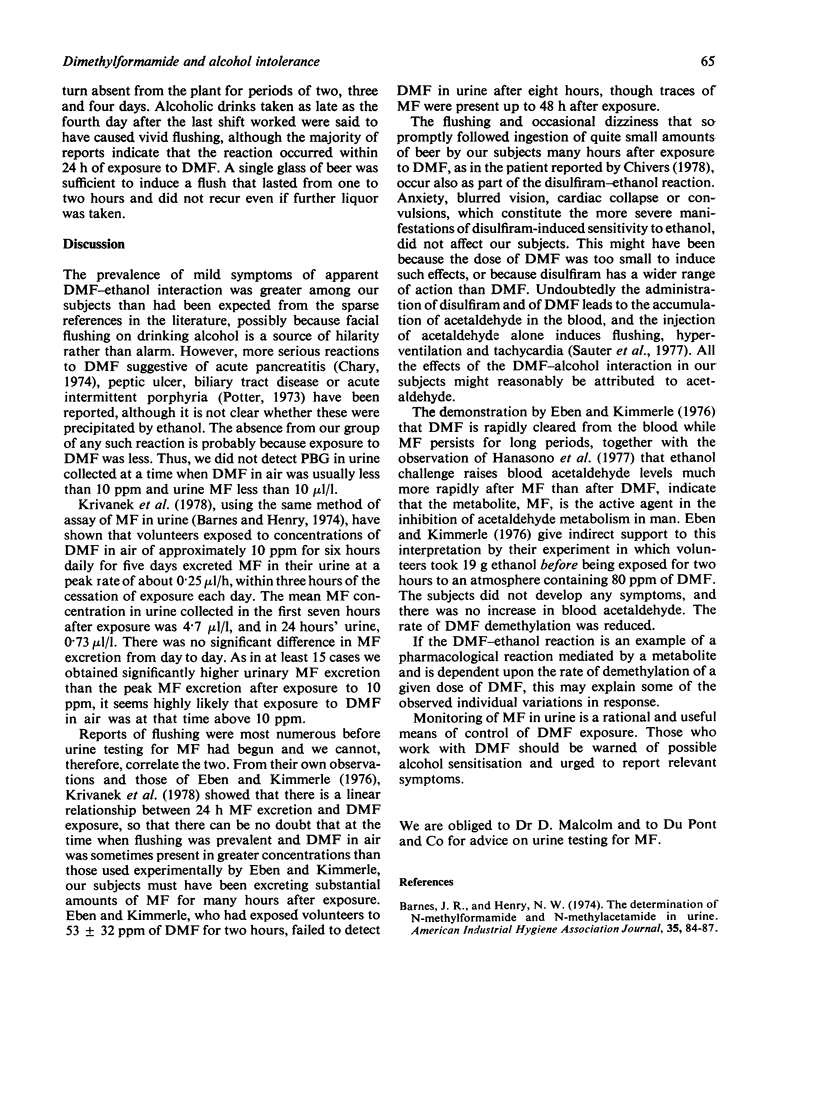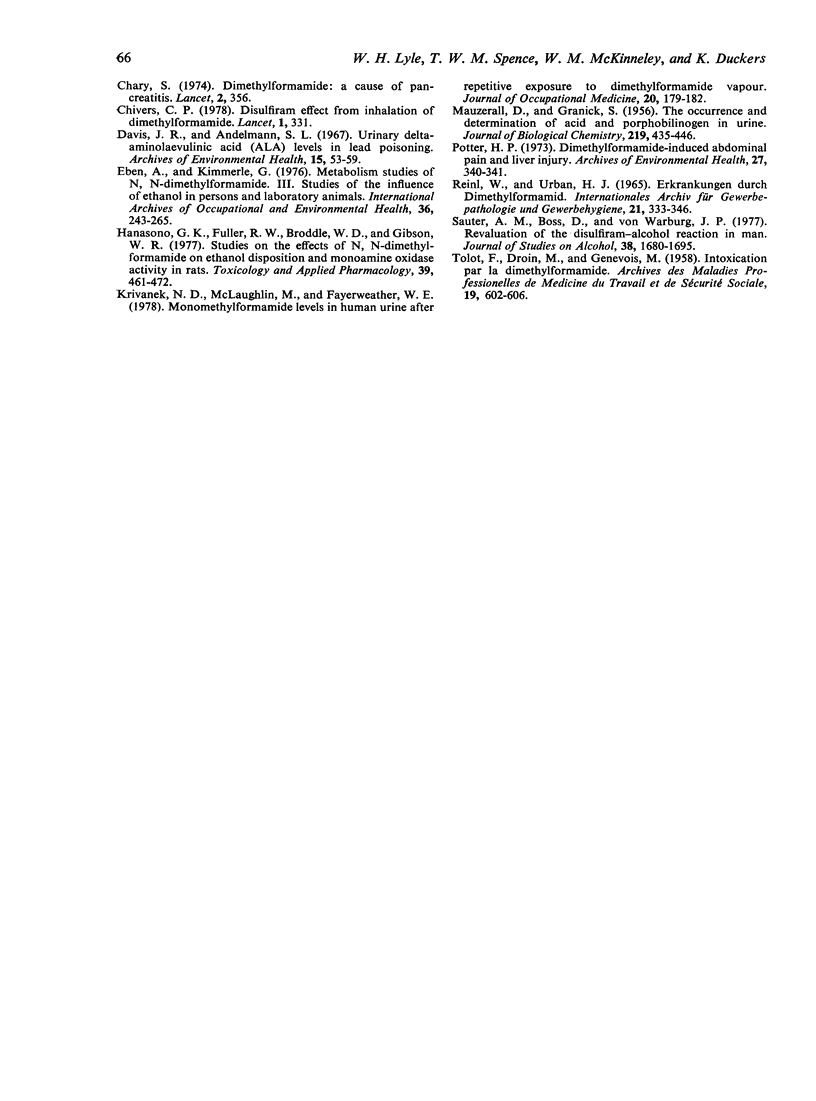Abstract
Facial flushing and other symptoms were reported by 19 of a group of 102 men who worked with dimethylformamide (DMF). Twenty-six of the 34 episodes occurred after the workers had consumed alcoholic drinks. The metabolite N-methylformamide (MF) was detected in the urine on 45 occasions, the highest recorded concentration being 77 microliter/litre. The highest recorded concentration of DMF in air was 200 ppm. The DMF-ethanol reaction is possibly attributable to the inhibition of acetaldehyde metabolism, probably by MF.
Full text
PDF



Selected References
These references are in PubMed. This may not be the complete list of references from this article.
- Barnes J. R., Henry N. W., 3rd The determination of N-methylformamide and N-methylacetamide in urine. Am Ind Hyg Assoc J. 1974 Feb;35(2):84–87. doi: 10.1080/0002889748507009. [DOI] [PubMed] [Google Scholar]
- Chary S. Letter: Dimethylformamide: a cause of acute pancreatitis? Lancet. 1974 Aug 10;2(7876):356–356. doi: 10.1016/s0140-6736(74)91742-5. [DOI] [PubMed] [Google Scholar]
- Chivers C. P. Disulfiram effect from inhalation of dimethylformamide. Lancet. 1978 Feb 11;1(8059):331–331. doi: 10.1016/s0140-6736(78)90105-8. [DOI] [PubMed] [Google Scholar]
- Davis J. R., Andelman S. L. Urinary delta-aminolevulinic acid (ALA) levels in lead poisoning. I. A modified method for the rapid determination of urinary delta-aminolevulinic acid using disposable ion-exchange chromatography columns. Arch Environ Health. 1967 Jul;15(1):53–59. doi: 10.1080/00039896.1967.10664873. [DOI] [PubMed] [Google Scholar]
- Eben A., Kimmerle G. Metabolism studies of N, N-dimethylformamide. III. Studies about the influence of ethanol in persons and laboratory animals. Int Arch Occup Environ Health. 1976 Mar 9;36(4):243–265. doi: 10.1007/BF00409355. [DOI] [PubMed] [Google Scholar]
- Hanasono G. K., Fuller R. W., Broddle W. D., Gibson W. R. Studies on the effects on N,N'-dimethylformamide on ethanol disposition and on monoamine oxidase activity in rats. Toxicol Appl Pharmacol. 1977 Mar;39(3):461–472. doi: 10.1016/0041-008x(77)90138-7. [DOI] [PubMed] [Google Scholar]
- Krivanek N. D., McLaughlin M., Fayweather W. E. Monomethylformamide levels in human urine after repetitive exposure to dimethylformamide vapor. J Occup Med. 1978 Mar;20(3):179–182. doi: 10.1097/00043764-197803000-00005. [DOI] [PubMed] [Google Scholar]
- MAUZERALL D., GRANICK S. The occurrence and determination of delta-amino-levulinic acid and porphobilinogen in urine. J Biol Chem. 1956 Mar;219(1):435–446. [PubMed] [Google Scholar]
- Potter H. P. Dimethylformamide-induced abdominal pain and liver injury. Arch Environ Health. 1973 Nov;27(5):340–341. doi: 10.1080/00039896.1973.10666392. [DOI] [PubMed] [Google Scholar]
- Sauter A. M., Boss D., von Wartburg J. P. Reevaluation of the disulfiram-alcohol reaction in man. J Stud Alcohol. 1977 Sep;38(9):1680–1695. doi: 10.15288/jsa.1977.38.1680. [DOI] [PubMed] [Google Scholar]
- TOLOT F., DROIN, GENEVOIS Intoxication par la diméthylformamide. Arch Mal Prof. 1958 Nov-Dec;19(6):602–606. [PubMed] [Google Scholar]


